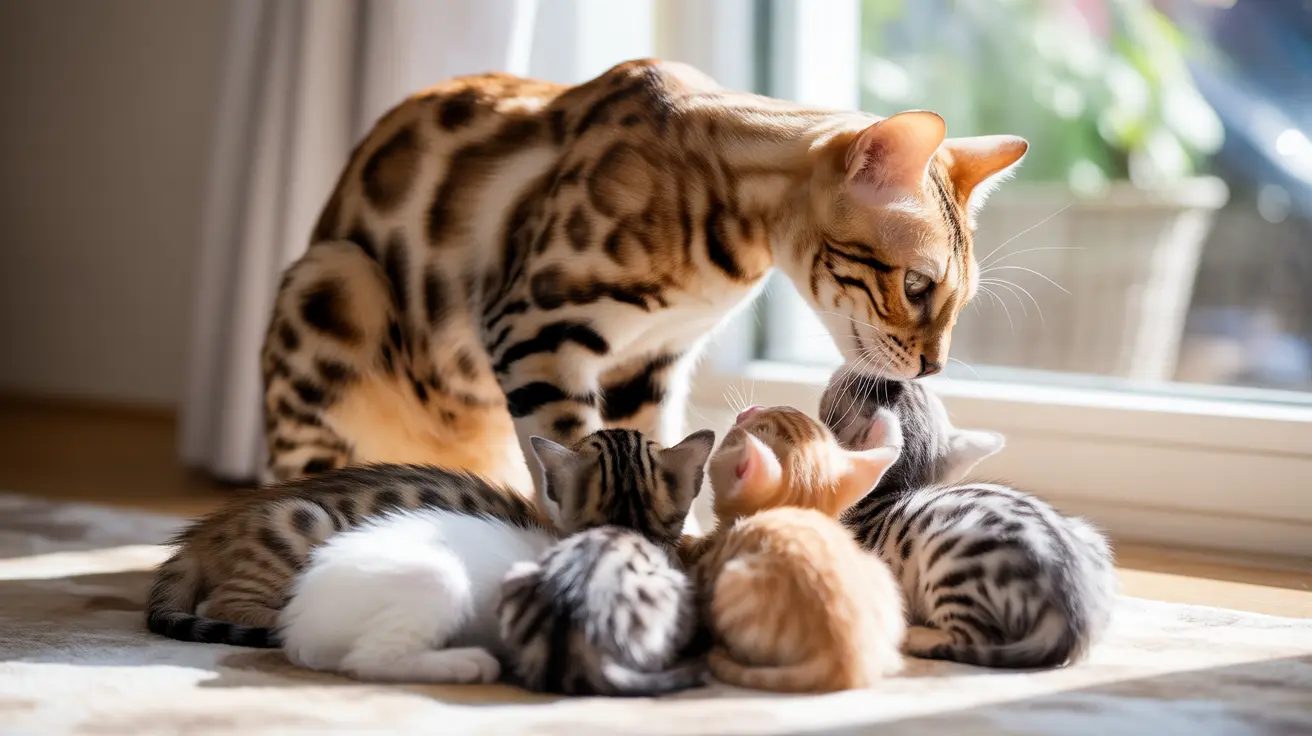Have you ever wondered why a single mother cat can give birth to a rainbow of differently colored kittens? This fascinating phenomenon is rooted in complex feline genetics and demonstrates nature's remarkable diversity. Let's explore the intricate mechanisms that create such varied coat colors within a single litter.
From solid blacks to striking calicos, the range of kitten colors possible in a single litter showcases the complexity of cat genetics. Multiple factors, including inherited genes, sex chromosomes, and even multiple fathers can contribute to this beautiful variety.
The Basic Building Blocks of Kitten Colors
At its core, kitten coat colors stem from two fundamental pigments: eumelanin (black/brown) and pheomelanin (red/orange). These pigments are controlled by specific genes that determine how they're expressed in a kitten's coat.
The dominant black gene (B) and its recessive variations can produce black, chocolate, or cinnamon base colors. When combined with the dilute gene, these colors can be softened to create blues, lilacs, and fawns.
The X-Factor: Sex-Linked Color Inheritance
One of the most interesting aspects of kitten coloration involves the X chromosome. Female cats, having two X chromosomes, can express multiple colors simultaneously, leading to tortoiseshell and calico patterns. Male cats, with only one X chromosome, typically show simpler color patterns.
This genetic setup explains why orange cats are more commonly male, and why calico cats are almost exclusively female. When a rare male calico appears, it's usually due to a genetic anomaly that makes them sterile.
Multiple Fathers, Multiple Colors
Adding to the color variety is the fact that cats can mate with multiple males during a single heat cycle. This means kittens in the same litter can have different fathers, each contributing their unique genetic makeup to their offspring's coat color.
Each kitten inherits a combination of genes from both parents, creating a unique genetic blueprint that determines their final appearance. This explains why you might see a black kitten, an orange tabby, and a calico all in the same litter.
Pattern Genes and Modifiers
Beyond basic colors, pattern genes create even more variety. Tabby patterns, spots, and white spotting can appear in various combinations. Special modifier genes can also affect how intensely colors appear and how they're distributed across the coat.
The white spotting gene can add white patches to any base color, while the dominant white gene can mask all other colors completely, resulting in a pure white kitten regardless of other color genes present.
Frequently Asked Questions
Why do kittens from the same litter have different fur colors and patterns?
Kittens inherit different combinations of genes from their parents, and possibly from different fathers in the same litter. These genetic combinations, along with sex-linked traits, determine their unique coat colors and patterns.
How do male and female cat genetics affect the coat colors of their kittens?
Female cats have two X chromosomes, allowing them to express multiple colors simultaneously (like in calicos). Male cats have only one X chromosome, resulting in simpler color expressions.
Can a single mother cat have kittens with multiple fathers causing color variety?
Yes, cats can mate with multiple males during one heat cycle, resulting in kittens with different fathers in the same litter. Each father contributes his genetic material, increasing color variety.
What causes calico and tortoiseshell patterns to appear mostly in female cats?
These patterns require two X chromosomes to express both orange and black colors simultaneously, which is why they appear almost exclusively in females. Male calicos are extremely rare genetic anomalies.
How do genes like the dilute gene and white spotting gene influence kitten coat colors?
The dilute gene lightens base colors (black to gray, orange to cream), while the white spotting gene adds white patches. These genes can work in combination with other color genes to create various patterns and shades.
Conclusion
The variety of colors in a single litter of kittens is a testament to the complexity and beauty of feline genetics. From sex-linked inheritance to multiple paternity and modifier genes, numerous factors work together to create the diverse coat colors we see in our feline friends.






